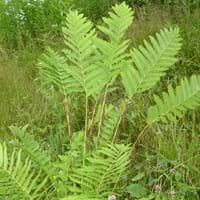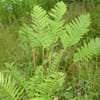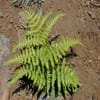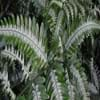Life Span
Perennial
Perennial
Type
Fern
Flowering Plants
Origin
Northeastern United States, Eastern Asia
Italy, Southern Europe, western Balkans
Types
Not Available
not available
Habitat
Forest margins, Roadsides, Terrestrial
Islands, Not Available
USDA Hardiness Zone
2-9
7-10
Sunset Zone
1a, 1b, 2a, 2b, 3a, 3b, 4, 5, 6
21,22
Habit
Upright/Erect
Upright/Erect
Flower Color
Not Available
Lavender, Light Blue, White
Flower Color Modifier
Bicolor
Bicolor
Fruit Color
Not Available
Non Fruiting Plant
Leaf Color in Spring
Green
Green, Light Green
Leaf Color in Summer
Green
Green, Light Green
Leaf Color in Fall
Green
Green, Light Green
Leaf Color in Winter
Not Available
Light Green
Leaf Shape
Lance shaped
Compound
Plant Season
Spring, Summer, Fall
Summer, Fall
Sunlight
Full Sun
Full Sun, Partial Sun
The pH of Soil
Acidic
Acidic, Neutral
Soil Drainage
Well drained
Average
Bloom Time
Not Available
Early Summer, Summer, Late Summer
Tolerances
Not Available
Heat Tolerance
Where to Plant?
Ground
Ground, Pot
How to Plant?
Divison, Spores
From bulbs, Seedlings, Stem Planting
Plant Maintenance
Medium
Low
Watering Requirements
Water Deeply, Water when soil is dry
Average Water Needs, Do Not over Water, Never Over-water, Requires regular watering
In Summer
Lots of watering
Lots of watering
In Spring
Moderate
Moderate
In Winter
Average Water
Average Water
Soil pH
Acidic
Acidic, Neutral
Soil Drainage Capacity
Well drained
Average
Sun Exposure
Partial Sun
Full Sun, Partial Sun
Pruning
Remove damaged leaves, Remove dead branches, Remove dead leaves, Shape and thin as needed
Remove damaged leaves, Remove dead branches, Remove dead leaves, Remove dead or diseased plant parts
Fertilizers
All-Purpose Liquid Fertilizer
fertilize every 2-3 weeks while growing, fertilize in growing season
Pests and Diseases
Mealybugs
fungus
Plant Tolerance
Drought
Drought, Heat Tolerance
Flower Petal Number
Single
Single
Showy Foliage
Yes
Not Available
Foliage Texture
Fine
Not Available
Foliage Sheen
Matte
Not Available
Attracts
Hummingbirds
Birds, Insects
Allergy
Skin irritation
Toxic
Aesthetic Uses
Showy Purposes
Beautification, Landscape Designing, Showy Purposes
Beauty Benefits
Not Available
Not Available
Environmental Uses
Air purification
Air purification
Medicinal Uses
Blood disorders
Asthma, Cough, Unknown
Part of Plant Used
Buds
Flowers, Leaves
Other Uses
Culinary use
Decoration Purposes, Showy Purposes, Used as Ornamental plant
Used As Indoor Plant
No
Yes
Used As Outdoor Plant
Yes
Yes
Garden Design
Feature Plant, Groundcover, Mixed Border
Mixed Border, Wildflower
Botanical Name
OSMUNDA claytoniana
CAMPANULA pyramidalis
Common Name
Interrupted Fern
Chimney Bellflower
In Hindi
बाधित फर्न
Chimney Bellflower
In German
unterbrochen Fern
Schornstein Glockenblume
In French
Fern interrompu
cheminée Bellflower
In Spanish
helecho interrumpido
Chimenea Bellflower
In Greek
διακοπεί Fern
καμινάδα καμπανούλα
In Portuguese
Fern interrompido
chaminé Bellflower
In Polish
przerwana Fern
komin Bellflower
In Latin
Fern intermissis
caminorum purgatores Bellflower
Phylum
Pteridophyta
Tracheophyta
Class
Polypodiopsida
Magnoliopsida
Order
Osmundales
Asterales
Family
Osmundaceae
Campanulaceae
Clade
Not Available
Angiosperms, Asterids, Eudicots
Tribe
Not Available
Not Available
Subfamily
Not Available
Not Available
Number of Species
Not Available
Not Available
Properties of Interrupted Fern and Chimney Bellflower
Wondering what are the properties of Interrupted Fern and Chimney Bellflower? We provide you with everything About Interrupted Fern and Chimney Bellflower. Interrupted Fern doesn't have thorns and Chimney Bellflower doesn't have thorns. Also Interrupted Fern does not have fragrant flowers. Interrupted Fern has allergic reactions like Skin irritation and Chimney Bellflower has allergic reactions like Skin irritation. Compare all the properties and characteristics of these two plants. Find out which of these plant can be used as indoor plant. If you are interested to decorate your house and garden, find out aesthetic uses, compare them and select the plant which will beautify your surrounding. Along with beautification, try comparing medicinal and edible uses of Interrupted Fern and Chimney Bellflower and you can choose the plant having best and most benefits.
Season and Care of Interrupted Fern and Chimney Bellflower
Season and care of Interrupted Fern and Chimney Bellflower is important to know. While considering everything about Interrupted Fern and Chimney Bellflower Care, growing season is an essential factor. Interrupted Fern season is Spring, Summer and Fall and Chimney Bellflower season is Spring, Summer and Fall. The type of soil for Interrupted Fern is Loam and for Chimney Bellflower is Loam while the PH of soil for Interrupted Fern is Acidic and for Chimney Bellflower is Acidic, Neutral.
Interrupted Fern and Chimney Bellflower Physical Information
Interrupted Fern and Chimney Bellflower physical information is very important for comparison. Interrupted Fern height is 60.00 cm and width 60.00 cm whereas Chimney Bellflower height is 120.00 cm and width 45.70 cm. The color specification of Interrupted Fern and Chimney Bellflower are as follows:
Interrupted Fern flower color: Not Available
Interrupted Fern leaf color: Green
Chimney Bellflower flower color: Lavender, Light Blue and White
- Chimney Bellflower leaf color: Green and Light Green
Care of Interrupted Fern and Chimney Bellflower
Care of Interrupted Fern and Chimney Bellflower include pruning, fertilizers, watering etc. Interrupted Fern pruning is done Remove damaged leaves, Remove dead branches, Remove dead leaves and Shape and thin as needed and Chimney Bellflower pruning is done Remove damaged leaves, Remove dead branches, Remove dead leaves and Remove dead or diseased plant parts. In summer Interrupted Fern needs Lots of watering and in winter, it needs Average Water. Whereas, in summer Chimney Bellflower needs Lots of watering and in winter, it needs Average Water.





